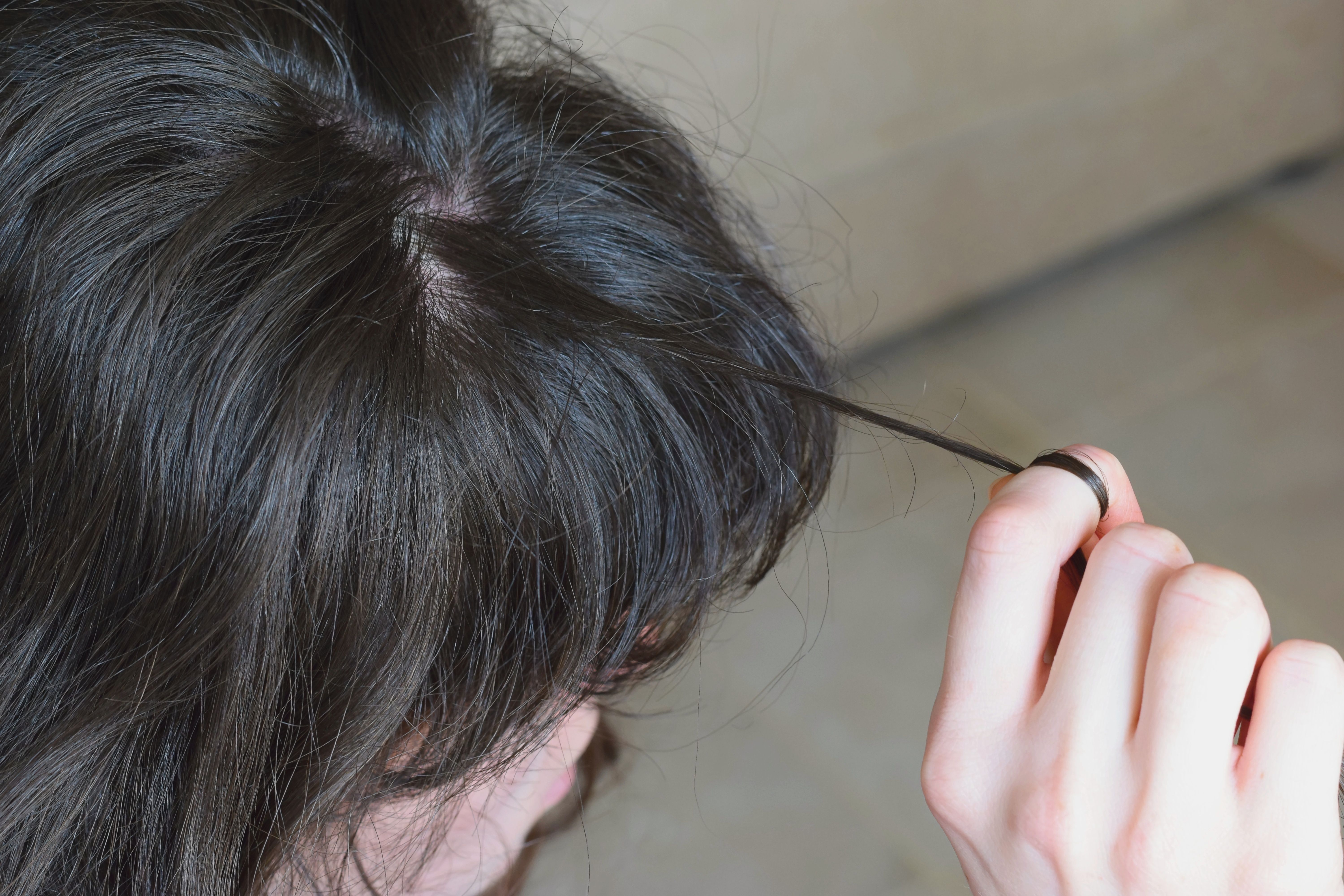- Acne
- Actinic Keratosis
- Aesthetics
- Alopecia
- Atopic Dermatitis
- Buy-and-Bill
- COVID-19
- Case-Based Roundtable
- Chronic Hand Eczema
- Chronic Spontaneous Urticaria
- Drug Watch
- Eczema
- General Dermatology
- Hidradenitis Suppurativa
- Melasma
- NP and PA
- Pediatric Dermatology
- Pigmentary Disorders
- Practice Management
- Precision Medicine and Biologics
- Prurigo Nodularis
- Psoriasis
- Psoriatic Arthritis
- Rare Disease
- Rosacea
- Skin Cancer
- Vitiligo
- Wound Care
News
Article
The Role of Dermatology in Habit Reversal Therapy
Author(s):
A recent review found success from a 3-component, simplified habit reversal therapy implemented by dermatologists for BFRBs.
Image Credit: © Tunatura - stock.adobe.com

Body-focused repetitive behaviors (BFRBs), such as skin picking and hair pulling, can result in distressing cutaneous manifestations of varying severity. While many patients with BFRBs consult dermatologists, a significant proportion subsequently resist psychological or psychiatric care. Habit reversal therapy (HRT) has been proven to be one of the most effective evidence-based management strategies for BFRBs and can be facilitated by many health care professionals including general practitioners, dermatologists, nurses, and psychologists.1 A recent case review noted that few dermatologists are comfortable offering HRT, making it a “severely underutilized technique in the management of various skin conditions associated with BFRBs.” Because of this, the researchers behind the review aimed to highlight strategies dermatologists can learn to offer in order to positively influence patient experience.2
Case Review: 66-year-old man with hyperkeratotic patch
The first case included in the review is a 66-year-old patient with no significant medical history other than a 15-year history of a 10-cm hyperkeratotic patch of lichen simplex chronicus on his left shin. Researchers reported frequent scratching with his nails occurred daily while sleeping or watching television. The patient had experienced increased pressure and stress at work recently, and usage of potent topical steroids alone had shown minimal improvement.
Case Review: 22-year-old woman with trichotillomania
The second case included in the review is a 22-year-old woman with no significant medical history other than a trichotillomania diagnosis at 18 years old. She reported her hair pulling being precipitated by stress, especially during exams. Researchers stated she had moderate depression and anxiety and was awaiting to start cognitive behavioral therapy session with a psychologist.
For each patient, researchers wrote that simplified HRT was implemented by a hospital dermatologist using its 3 components: awareness training, competing response training, and social support.
HRT Implementation
Using a self-observation chart for 2 weeks, the review stated the patients were first made aware of their behavior by identifying situations and the different types of triggers that preceded their habit. Researchers noted that emotional states of stress and anxiety related to work and school as well as engagement in sedentary activities were identified as triggers for patient 1. As for patient 2, they identified visual triggers such as looking in the mirror, tactile triggers such as the sensation of hair on her fingertips, and location triggers such as lying in bed before sleeping were noted to be present before the hair pulling occurred.
Next, the review stated patients were instructed to replace habits like scratching and hair pulling with other behaviors that reduced triggers and limited the behavior. For instance, researchers stated that patient 1 managed scratching by doing activities like yoga and jogging when stressed, and by sitting on his hands until the urge to scratch passed. Patient 2 removed triggers like mirrors from her bedroom, wore gloves, and avoided lying in bed unless very tired. She also replaced hair pulling with pressing on a phone widget until the urge passed. Social support and behavioral rewards were used to improve compliance. A reduction in behaviors was reported in both patients after HRT was introduced, resulting in “significant” clinical improvement within 6 months.
Discussion and Conclusion
The review noted that treatment of BFRBs is complex and encompasses pharmacological and nonpharmacological approaches, with cognitive behavioral therapy (CBT) as the cornerstone. Among various CBT methods, Habit Reversal Training (HRT) stands out as the most researched and effective. Researchers stated that simplified HRT can be introduced in dermatology clinics, focusing on 3 key components: awareness training, competing response training, and social support.3
Researchers wrote that dermatologists play a critical role in identifying and addressing BFRBs, which often present as skin lesions or hair loss. Many patients with these disorders avoid seeking psychological help due to stigma, emphasizing the importance of dermatologists being knowledgeable and proactive in their management.4 The review stated that HRT stands out as a “highly effective” therapy for BFRBs, and dermatologists can implement its principles in clinical practice to improve patient outcomes, serving as the initial point of contact and support for individuals experiencing these challenging conditions.
References
- Madan SK, Davidson J, Gong H. Addressing body-focused repetitive behaviors in the dermatology practice. Clin Dermatol. 2023;41(1):49-55. doi:10.1016/j.clindermatol.2023.03.004
- Sian CMTH, Yenn LC, and Dua JPL. Habit reversal therapy by dermatologists to treat body-focused repetitive behaviors: Review and case reports. Dermatological Reviews, 5: e240. https://doi.org/10.1002/der2.240
- Lee MT, Mpavaenda DN, Fineberg NA. Habit reversal therapy in obsessive compulsive related disorders: A systematic review of the evidence and CONSORT evaluation of randomized controlled trials. Front Behav Neurosci. 2019;13:79. Published 2019 Apr 24. doi:10.3389/fnbeh.2019.00079
- Lochner C, Roos A, Stein DJ. Excoriation (skin-picking) disorder: a systematic review of treatment options. Neuropsychiatr Dis Treat. 2017;13:1867-1872. Published 2017 Jul 14. doi:10.2147/NDT.S121138
Newsletter
Like what you’re reading? Subscribe to Dermatology Times for weekly updates on therapies, innovations, and real-world practice tips.














